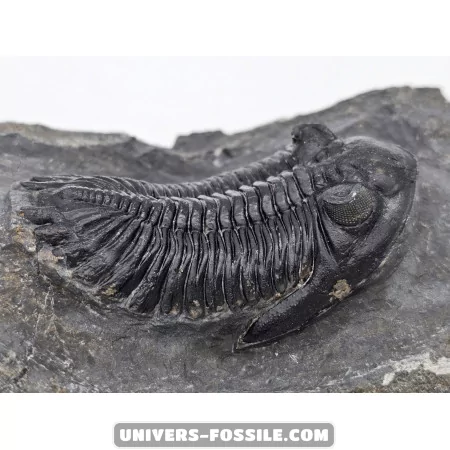Hollardops Trilobites - Fascinating Extinct Marine Creatures

Hollardops Trilobites
Hollardops trilobites are an extinct species of trilobites, a group of marine arthropods that thrived millions of years ago. These fascinating creatures were among the prominent inhabitants of the Paleozoic oceans, offering paleontologists valuable insights into ancient marine life.
Anatomy of Hollardops Trilobites
Hollardops trilobites were characterized by their segmented body into three distinct lobes, hence their name. Here are some of the most remarkable anatomical features of these creatures:
- Segmented body: Like all trilobites, Hollardops had a body divided into three longitudinal parts - the cephalon (head), the thorax (body), and the pygidium (tail).
- Calcified exoskeleton: The outer shell of trilobites was formed of chitin and calcite, providing rigid protection against predators.
- Compound eyes: Hollardops trilobites possessed large compound eyes, consisting of many small hexagons, giving them a panoramic view of their environment.
- Antennae: Although few fossilized specimens have retained their antennae, it is likely that Hollardops had them to detect environmental stimuli.
- Segmented legs: Trilobites used their segmented legs to move along the seafloor, sifting through the sediment in search of food.
Welcome to the World of Hollardops Trilobites
Hollardops trilobites, fascinating creatures from the Middle to Upper Devonian period, offer a glimpse into the ancient marine world that thrived 390 to 370 million years ago. These armored arthropods were both predators and prey in the diverse ecosystems of that era.
Discover their Habitat
Fossils of Hollardops have been unearthed in geological formations across the globe, from Morocco to Spain, Germany, and the Czech Republic. These discoveries shed light on the species' distribution and evolutionary history, enriching our understanding of trilobite diversity.
Explore their Lifestyle
As benthic dwellers, Hollardops trilobites scoured the seafloor for sustenance, feeding on detritus and small organisms present in the substrate. Their intricate segmented appendages aided in capturing prey, although they themselves were not immune to predation by cephalopods and fish of the time.
Contemplate their Extinction
Tragically, like all trilobites, the once-majestic Hollardops met their eventual demise, leaving behind fossils that tell tales of ancient struggles for survival. Their robust exoskeletons provided some defense against predators, but the scars of battles lost linger on in the remnants of their existence.
Step back in time with Hollardops trilobites and witness the enduring legacy of these remarkable prehistoric creatures.
